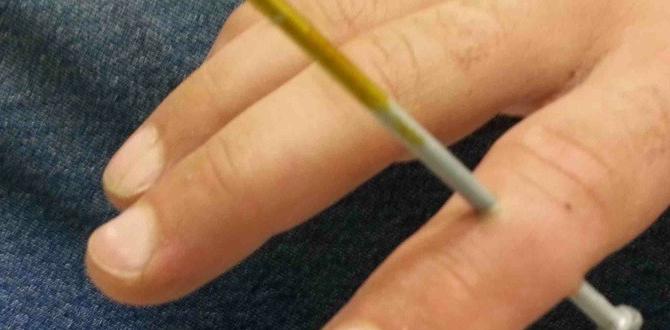Firstly, turn the staple gun off and engage the safety lock to avoid misfiring. Now use the lever to remove the pusher rod. Afterward, insert the staples and check if the staples can move freely on the rail or not. Now reassemble the pusher rod to its place. Finally, test your staple gun on a piece of paper or wood before you start working.

Table of Contents
First of All How to Load a Staple Gun
The first thing you need to do before start working with a staple gun is to load them. As there are different types of staple guns out there with different mechanisms, the loading procedure might vary sometimes. And that procedure might be intimidating for you if you are new to these.
But if you follow the user manual and the right way of loading staples, it should not be an issue for you. So, here we will be talking about the perfect way of loading some popular types of staple guns and how you can prevent any kind of accidents while reloading.
How to Load a Manual Staple Gun

Manual staple guns are not power by any air compressor or electricity. So you will not have to turn off or detach anything from it. But if your unit features any safety mechanism, be sure to turn them.
Step 1: Locating the Pusher Rod
As a rear loading manual staple gun, you will find the pusher rod back of your staple gun. The back of the pusher rod has got a small rectangle metal and a small hook on the top or bottom of the rod. And this is how the rod is attached to the unit.

Step 2: Removing the Pusher Rod
Now push the rod down and forward at the same time with your thumb and forefinger, if the hook is placed on the top of the rod. On the other hand, if the hook is on the bottom of the pusher rod, push it in the same way but this time, forward and down.

This way the rod will be unattached. Now pull it out and keep it aside. Sometimes, the direction might not work in this process. In that case, try the other direction to pull the rod out.

Step 3: Loading the Staples in
Afterward, you can take any row of staples that your gun supports and keep them in a way so that the legs of the staples are facing down. Now you have to make the staple slide to the front of the staple gun.

If you are planning to use more than one row of staples, do not forget to leave 1/4inches of space remaining on the back. You have to check if the staples are slides to the front or not before you insert the rod back. Because if you fail to do so, your staples might get stuck while you are working.

Step 4: Reinsert the Pusher Rod
Now push the rod back to its place and it should get locked through the hook. In some models, you might feel a little bit of tension because of a spring in the pusher rod touching your staplers.


Step 5: Testing the Staple Gun
If you are done loading the staples on your staple gun, it’s time to check if they are loaded properly. Just take a piece of paper and fold them or use a piece of wood or fabric and place it under your staple gun.
Finally, press the trigger to staple the paper and check if there is any jamming issue or not.
How to Load a Pneumatic Staple Gun

Step 1: Detach the Stapler From the Air Compressor
Before reloading, you have to turn the staple gun off and detach the air compressor. To do so, you have to loosen the nut of the staple gun that connects to the hose of the compressor. There might be a safety trigger in your specific model that prevents any accidental misfire, turn that on.
Step 2: Removing the Magazine
Afterward, push on the lever on your pneumatic staple gun. This should unlock the rod from its place. Now pull the rod away and lock it, so that it does not move while you are loading the staples.

Step 3: Load the Magazine on the Rail

To load the magazine on the rail, you have to position the staples in a way that the legs are placed on both sides of the rail. Now please check if the staples can move freely from the front to the back without any barrier.

Step 4: Move the Rod to its Place
Now unlock and move the follower rod back in its place by just pushing. If the rod is in its place, it should get locked there. And now to remove the follower rod again, you will have to press the lever again. In some models, you can change the position of the follower rod by pressing the lever.

Step 5: Testing the Staple Gun
Before you start to test the staple gun, reattach the air compressor with it. Now take a piece of wood and see if the staples get jammed or not. Besides, some guns tend to fire more than one staple at a time. Be sure to check that too.
How to Load an Electric Staple Gun

Step 1: Turn off or Unplug the Stapler
Turn your staple gun by the power switch or unplug the tool from the socket. Now turn the trigger lock on.

Step 2: Release the Magazine
Press the magazine release button and it should release your magazine. You might find the button on the rear side of the unit.


Step 3: Loading the Staples
Now insert the new row of staples in a way that the legs are facing downward. Slide them to the front of the staple gun.

Step 4: Reattach the Magazine
Slide the magazine back in its place. And you have done that right, you should hear a clipping sound. And if it feels alright, plug the staple gun back. Finally, don’t forget to try the stapler on wood and see if the tool is working alright.


Frequently Asked Questions
How to load brad nails?
If your staple gun accepts brad nails, there should be a marking on the shaft that says “Load Brads”, or something like that. Besides, there should be a direction that shows the right way of loading brad nails. If there is not any such sign, look at the user manual.
How do you get a staple gun jammed?
Check the front of the staple gun from where the staplers are released. Remove the magazine and use your pliers to pull the stuck staples up. Now reassemble the staple gun.
Conclusion
Loading your staple gun is not that hard, even if you are new to these. But if you are not careful enough and follow the right instruction, you might face issues like misfiring or jamming. Besides, do not forget to turn the power off and engage the safety trigger to avoid accidents.






